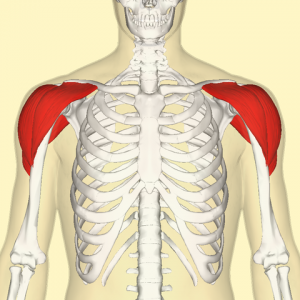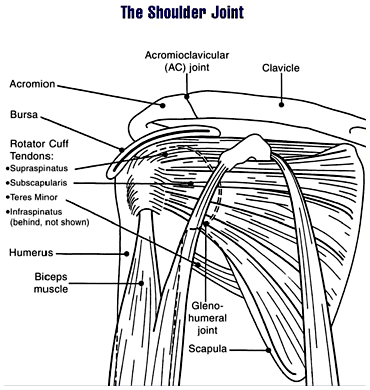I’ve had a flu shot many times. No one really wants to get a flu shot, but many people generally consider it worthwhile if it keeps you from getting the flu. I have no time to be sick, so I usually get vaccinated each fall.
While the girls were already vaccinated, I had yet to get my flu shot this year. I meant to do it at my doctor’s office visit last month, but then forgot to ask about it. So a little over a week ago, when I heard of more flu cases creeping into our area, I decided to get my flu shot at Walgreens while I was picking up a few other items. Cordy was with me, too, and I thought it might be good for her to see me getting a shot, to reinforce that it’s not a big deal.
I answered the pharmacist’s questions and paid my $28 for the vaccine, then waited in the little cubicle they had set up for vaccinations. The pharmacist walked in and asked which arm I preferred. Seeing how I was already seated with my right arm to the wall, I said I preferred my left. It was my non-dominant arm, and I know from experience that the muscle is sore for a couple of days after the shot.
He opened an alcohol pad and cleaned off an area on my arm. Or rather, my shoulder. I noticed the area he chose seemed awfully far up on my arm. As an RN, I never gave shots that high up on the deltoid. But I’ve also been out of clinical practice for a few years, so maybe there was a new technique I wasn’t familiar with? I didn’t say anything, because I didn’t want to sound bossy and tell this young pharmacist how to do what he was surely well-trained to do.
The pharmacist stood beside my chair and quickly gave the shot, right at the area he had swabbed on my shoulder. I felt the initial poke of the needle through my skin, and then felt nothing else. “All done,” he said. I blinked. There was no pain, not even a slight burning sensation that has always accompanied a shot. I didn’t feel anything from the injection. Weird.
I tried to rationalize my confusion, and settled on believing this young pharmacist was a master at flu shots and somehow found a way to make them completely painless. I called to Cordy, who was standing nearby, scared at the idea of me getting a shot and unable to watch, and told her, “See? I’m done. And it didn’t hurt at all.” My smile to reassure her was genuine.
Later that night, my arm felt a little sore, which I knew was common with the flu shot, and I didn’t think anything of it. The next morning (Monday), my arm was significantly more achy when I moved it in certain directions. The ache felt different from how I remembered the muscle pain from a shot before. I attributed it to faulty memory. Monday night, I noticed that sleeping on my left side was uncomfortable.
Tuesday morning, the pain was worse. I was unable to move my arm in certain directions without a sharp shock of pain. I could lift my arm directly ahead of me, but couldn’t cross it over my body, and I couldn’t lift it out to the side by more than 45 degrees without the pain keeping me from going further. I had noticed the ache occasionally traveling down my upper arm into my elbow, too. And I was starting to develop some occasional tingling and numbness in my left hand and fingers, too. Tuesday night I had to sleep on my right side or back – the left side hurt far too much, and woke me up several times when I shifted in my sleep.
At that point I started to be concerned. Muscle soreness is typical with a flu shot, but this went beyond soreness. It was now the third day after the shot, and I should have been feeling better by now. Instead, I was counting the hours between ibuprofen doses and trying to search online for why my shoulder and upper arm were reacting in this manner.
By Thursday, the sharp pain had lessened quite a bit, but the intermittent numbness and a constant low-level ache had set in. I was also starting to develop some “popping” in my shoulder when I moved it. Prodded by conversations with a few people, and by some scary information from Dr. Google, I made an appointment with my doctor for Friday.
My doctor listened to the whole story with concern, then carefully examined my shoulder and arm, trying different motions to see which movements were uncomfortable and which didn’t cause any problems. She knows I’ve never had a shoulder injury, too. (Knees are another story.) Surprisingly, she agreed with Dr. Google: I have bursitis in my shoulder, with an outside possibility of a small rotator cuff tear, too.
When the pharmacist gave the injection, he was too high on the deltoid muscle. My doctor said that a lot of women don’t have a significant amount of muscle mass at that spot on the deltoid, and directly under it is the subdeltoid bursa, a pocket of fluid that is part of the shoulder joint, designed to reduce friction in the joint.
 The deltoid muscle, in red. (Source)
The deltoid muscle, in red. (Source)
So when he administered the injection too high on my arm, he went through the deltoid completely and punctured the bursa, injecting the flu antigen into the bursa. That would be why I didn’t feel any pain or burning when it was injected, and it’s also why I’m experiencing all of my shoulder pain symptoms.
 The bursa is located just above the rotator cuff tendons, with the deltoid over all of it. (Source)
The bursa is located just above the rotator cuff tendons, with the deltoid over all of it. (Source)
The bursa fluid isn’t meant to have a flu virus antigen mixed in with it. So it reacted with inflammation, pain, and stiffness in the joint. The numbness and pain into my elbow that I’m feeling is likely caused by the inflamed bursa putting pressure on the nerve.
My doctor thinks the symptoms should go away within a week or so. She recommended a conservative approach for now, and that we treat it with heat and ibuprofen. If it doesn’t get better within a week, then we may try a round of oral steroids to help it along. If that doesn’t fix it, then we’ll consider an MRI to see if the rotator cuff was damaged, physical therapy and begin thinking about long-term treatment plans.
That last sentence scares me. Long-term treatment. Long-lasting shoulder pain. I’m really hoping my doctor is right and it’ll resolve within a week. In doing research on this, I discovered that the government already has a name for this type of vaccine injury: shoulder injury related to vaccine administration, or SIRVA.
As of 2010, it’s a known type of vaccine injury, and a study on it found several identifying characteristics. In most cases, those affected were women, the person administering the injection was standing while the patient was seated, and the injection was placed too high on the arm, resulting in the injection being delivered into the bursa.
This led to the recommendation that “the upper third of the deltoid muscle should not be used for vaccine injections, and the diagnosis of vaccination-related shoulder dysfunction should be considered in patients presenting with shoulder pain following a vaccination.” (The Dept. of Health & Human Services accepted this recommendation, along with also recommending that the person administering the vaccine be seated if the patient is seated to reduce error.)
A report on this injury was given during a 2010 Advisory Commission on Childhood Vaccines meeting (pages 15-28 or so), where it was revealed that among those without prior shoulder injuries, only a third who developed SIRVA ever fully recovered. Meaning there’s a chance that an improper injection can lead to life-long joint pain in that shoulder.
And here’s the kicker: I still don’t have any immunity to the flu. My doctor said it’s unlikely that I gained any immunity from that shot, since it went into the bursa and not the muscle. I paid $28 to be given subdeltoid/subacromial bursitis, that has a chance of causing chronic shoulder pain. Lovely.
I don’t want anyone else to have to go through this, so here are a few tips for you the next time you have to have a flu shot (or any vaccine injected into your arm):
1. If it seems too high of a position, say something! I wish I had followed my own advice here. A shot should not be given just under your acromion process (the knobby end of your shoulder), but should be given at least two finger widths down. Needle size should be carefully considered, too. Better to say something rather than be injured. Not sure how to bring it up? Try this as a starter when the alcohol pad is rubbed on the spot: “Huh, that seems really high on my arm. I don’t remember getting any other shots that high.”
2. Ask if you can stand while the shot is given. If the provider would prefer that you sit, ask that person to sit as well, so that you’re both at the same level. Injecting from above tends to result in the injection being given higher on the deltoid, which increases your risks. Trying to estimate two finger widths down while standing provides a skewed view of the site and means your shot will likely be placed too high.
3. For the flu shot, ask if you’re eligible for Flumist. The Flumist version of the vaccine is sprayed into your nose – no needles! Not everyone is a good candidate for this version of the vaccine, since it’s a live vaccine, but if you’re eligible you’ll prevent any needle injury by avoiding it altogether.
4. Consider who administers your shot. Pharmacies are convenient for flu shots, but how well do you know your pharmacist? Many may not have the experience of your doctor’s office nurse. On the other hand, you may have a better relationship with your pharmacist than your doctor’s nurse. Ideally, you want someone who has a good amount of experience in giving shots, and who gives them with some regularity.
However, one point regarding this: sometimes, you get a bad shot, no matter the person giving it. I’ve had my flu shot at Walgreens in the past, by one of their pharmacists, and didn’t have any issues. Nearly any medical professional has a risk of giving a bad shot, even if they’ve been involved in your care since you were a baby. That’s why it’s important to pay attention and ask questions if something seems wrong, even if the professional is someone you trust.
I’m not going to say that the solution is to never get another shot. But I do think we should all consider each shot as a careful medical procedure. Any medical procedure has the ability to help, but most also have the ability to harm if done improperly. We should be cautious in who we choose to give us a shot, and we shouldn’t feel dumb or bossy to speak up and ask questions if we’re uncertain.
As of today (1 week, 2 days after the shot), my shoulder has almost a full range of motion again, although a few movements continue to be painful. A low-level ache is present nearly all the time (I’m told this is what arthritis feels like?) and I still can’t sleep on that side. I have occasional numbness/tingling in my fingers, but it’s less and less each day.
I have noticed a significant weakness in that joint now, so I’m taking it slow and easy with lifting anything or too much movement. And the “popping” in my shoulder has continued – with certain movements you can hear the pop across the room. I had a chiropractor recommended to me, and I will likely give him a visit to see if he can help. Hopefully it’ll be resolved soon and the only popping and ache will be the standard ones in my knees.
UPDATES
To see more about how I’ve been dealing with SIRVA, I’ve provided links to my update posts below:
An Update on My Shoulder – one week later
The Ongoing Shoulder Saga, Episode IV (A New Hope?) – one month later
Flu-Shot Shoulder Update – nine months later













